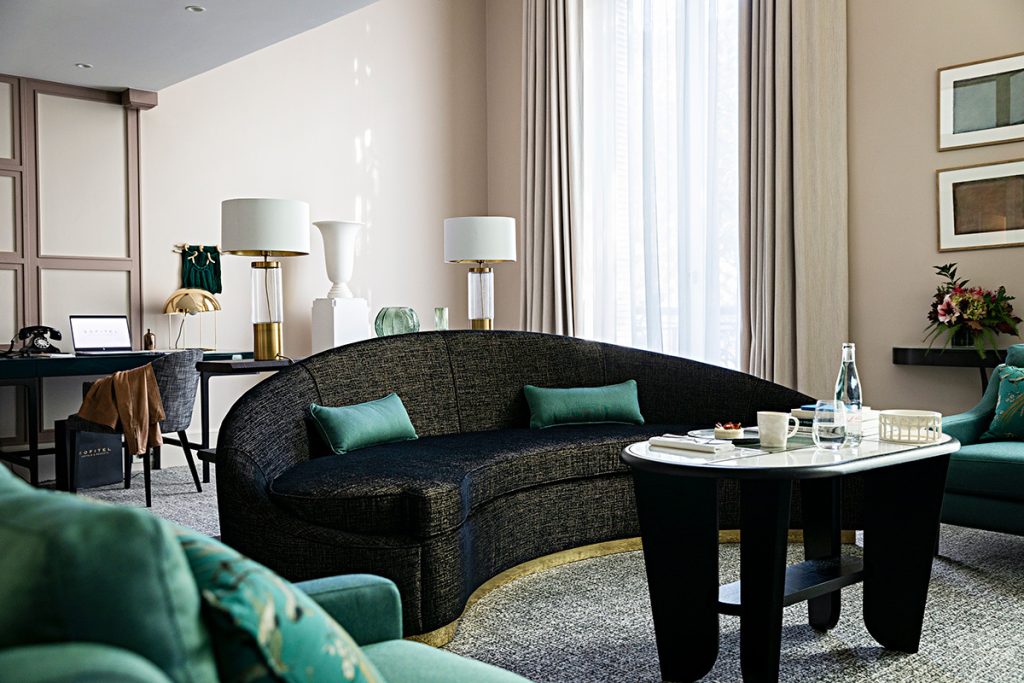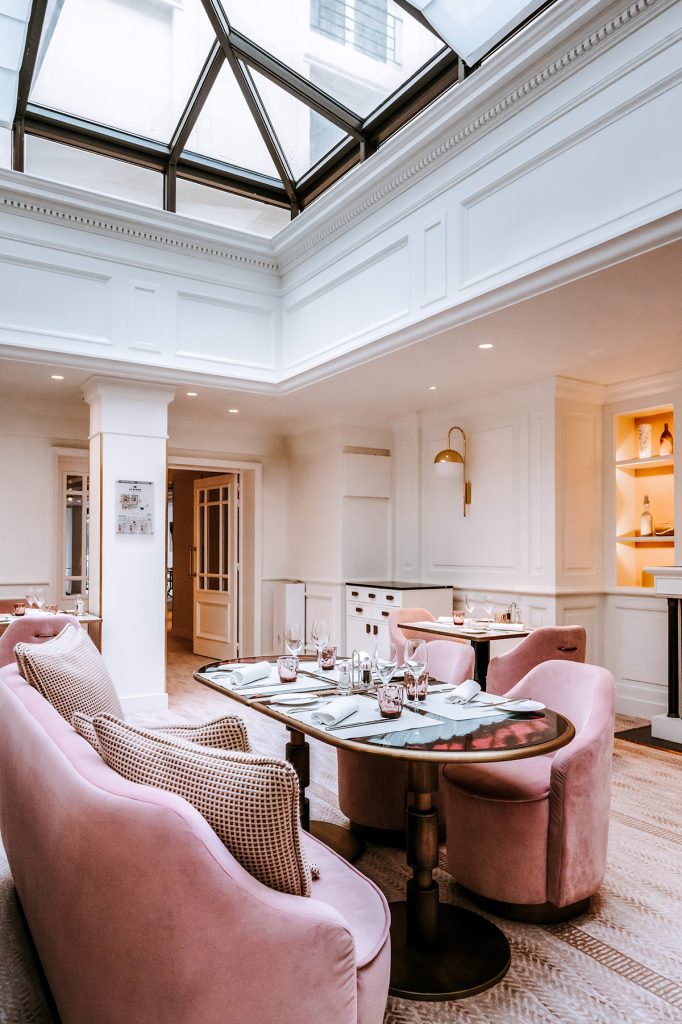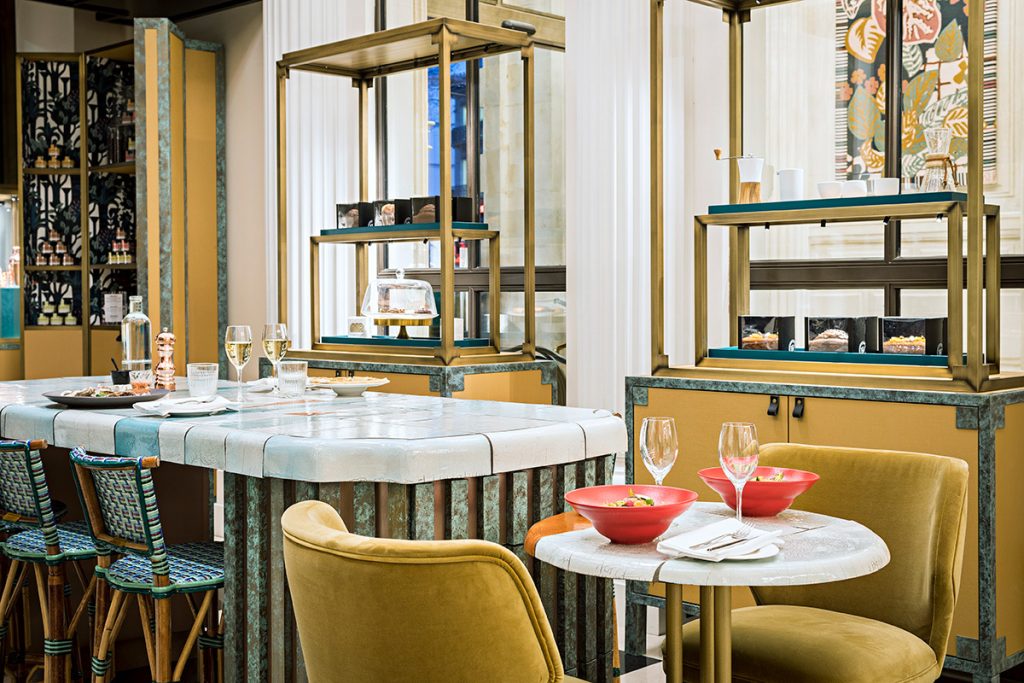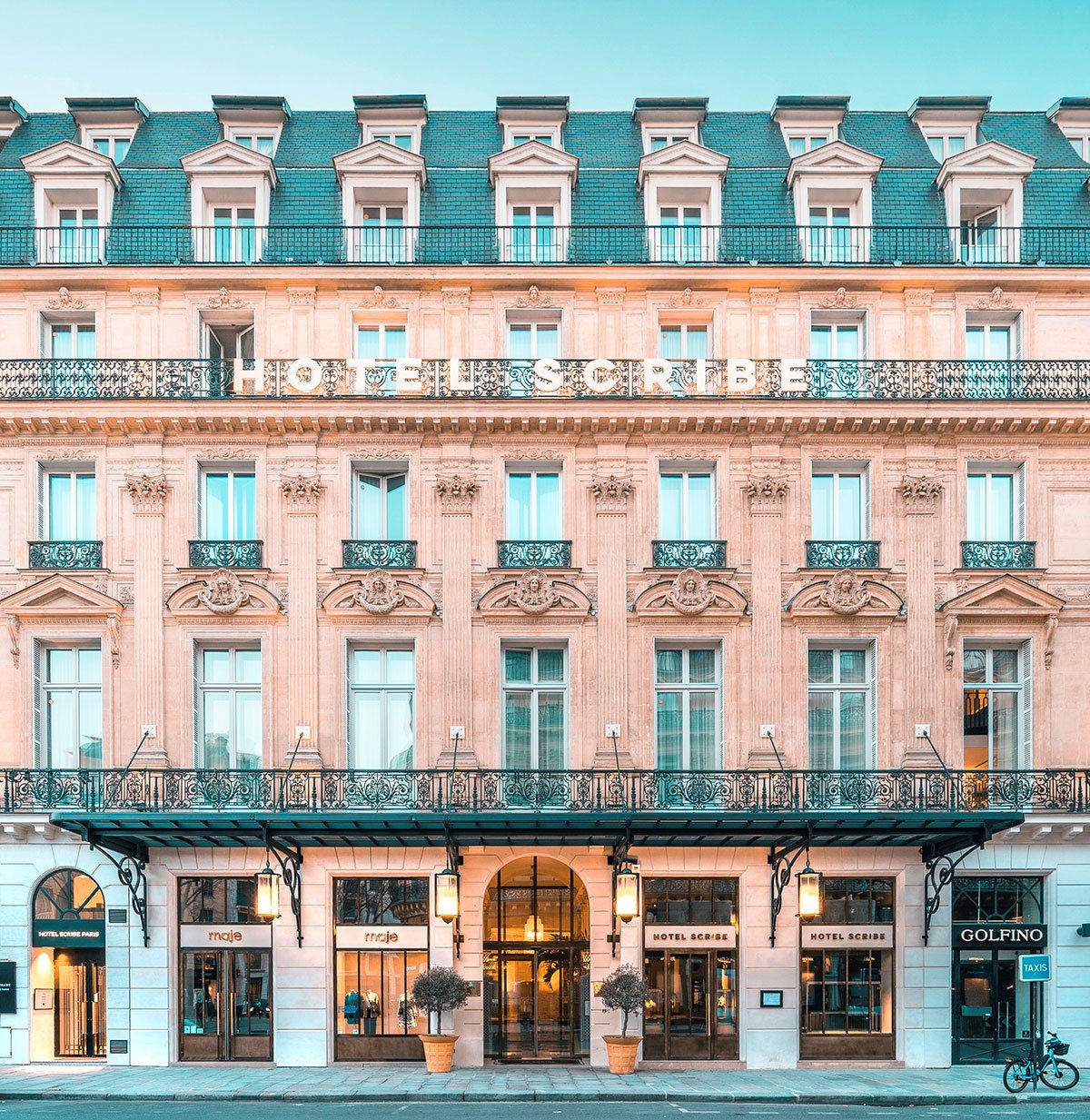You’re going to Paris, so forget the Folies Bergère. Skip the selfie with the Mona Lisa. And don’t stay in a typical hotel room that could be found anywhere on the planet. Instead, experience the real joys of the world’s most cultured city. You won’t find yourself surrounded by fellow Americans following the traditional, worn-out tourist routes. If you like culture and the arts, you’re in for a moveable feast.
Where to stay? May I propose the Sofitel Le Scribe Paris Opéra, an ultra-luxury hotel that whispers, rather than shouts, its ultra-Parisian heritage? Located a block away from the Opera Garnier and a short walk to the Galeries Lafayette department store, the hotel was built in 1861, when the true architect of Paris, Baron Georges-Eugène Haussmann created the opera district. From its first days, Le Scribe was at the center of art and beauty in Paris. In 1863, the Jockey Club, the most elite symbol of French society, made Le Scribe its home. Eight years later, Louis Vuitton opened a leather goods store on the property. And in 1895, Le Scribe hosted the world’s first movie screening, courtesy of the legendary Lumière brothers.

Le Scribe has recently reemerged from a two-year refurbishment, with an emphasis on stylish and understated design so that guestrooms and suites resemble Haussmann period apartments, not standard issue hotel rooms. The walk-in closets, designed like shop windows, remind you that Parisian fashion can be found moments away. You feel as though you’re in a private club, not a hotel. The artistic history and quiet grandeur of this lovely hotel prepares you for your deep dive into French art and culture.

First stop: the Musée Rodin. Auguste Rodin, in his lifetime and a century after his passing, represents the spirit of France—culture, creativity and commerce. Remarkably, Rodin launched his sculpting career at the age of 40, after having worked in the studio of another artist for almost two decades. By the time he was through, the sculptor had created some of the most iconic images the art world has ever known: The Thinker, The Kiss and two intertwined hands reaching skyward, a design known as The Cathedral.
Rodin was a celebrity in his own time, enjoying popularity and wealth, as well as friendships with other artists such as Claude Monet. Like Monet, Rodin found his work rejected by the official arts gatekeeper of his era, the Salon, and over the course of his career, Rodin moved from literal treatments of his subjects to an interest in the spiritual nature of the subjects he sculpted. Also, like Monet, he lived long enough to experience international acclaim for his work.

Rodin was not only genius because of his art, he also commanded a highly successful business enterprise, a studio that would create castings of his work in different sizes for different audiences. Like many successful sculptors, Rodin would often repurpose the same design in multiple works of art, increasing his efficiency (and profitability).
The Musée Rodin occupies a massive 18th century home and garden alongside Les Invalides, Napoleon’s resting place, on the Left Bank. After a multi-year renovation, the Musée Rodin now displays unfinished works from Rodin’s later years, which reveal much about the artist’s creative process.
You’re a Monet fan? I knew it. Most Monet lovers head to the voluptuous Musée d’Orsay, a one-time rail station turned into an Impressionist art museum overlooking the Seine. Much of the d’Orsay collection had previously been jammed into a tiny space, the Jeu de Paume, a gallery that took its name from the French term for tennis court, adjacent to the Tuileries Gardens. The d’Orsay collection is impeccable, but the crowding can be exhausting, especially in spring and summer months, making it hard to get close to the artwork. So, the smart play is to head to the Musée Marmottan, which features more than 160 of his paintings.
The Marmottan’s prodigious collection is the repository of the works owned by the artist’s grandson, Michel Monet, who passed away in a 1960 automobile accident. Getting there requires a bit of an effort—either an Uber or taxi ride or a trip on the Metro—because the museum is located in a residential neighborhood alongside a lovely park. Make the trip and you can gorge yourself on so many of Monet’s works without feeling overwhelmed by the crowds.
Come the night, surely you want to do something more Parisian than the Moulin Rouge or the Bateaux-Mouches. Instead, take in an opera or a ballet at the Garnier, the magnificent opera house in the center of Paris. The Paris Opera and its world-famous partner, the Paris Opera Ballet, date back centuries. You’ve never been to an opera or a ballet? You can always leave at the first intermission. But you might just like it. And to experience the opulent setting, the high, vaulted ceilings of the lobby is well worth the price of admission.

Note that many of the performances take place at Opéra Bastille, a second, modernistic location alongside the Bastille square, where a prison was overrun by revolutionaries in 1789. The Opéra Bastille is a beautiful hall…but it lacks the history and charm of its older cousin. So if it all possible, hold out for a performance at the Garnier. Also, Paris being Paris, operas and ballets sell out. The smart play is to request a notification when tickets go on sale for a performance that matches with your Paris visit. Even hopelessly sold out performances have occasional tickets popping up, so when you get an email announcing availability, jump on it.
Paris has an outstanding symphony orchestra, the Orchestre de Paris, that used to perform at the Salle Pleyel, a traditional European concert hall. Again, Paris being Paris, the desire for something new and outrageous took root, and the Orchestre now plays in a building that looks like a huge spaceship that landed, for reasons no one knows, in a new cultural center on the Rue Jean-Juarès in the northern part of the city.
The interior of the concert hall looks as if it was designed by a hyperactive gang of middle school kids who just figured out architecture software on their laptops. But as strange, colorful and seemingly off-kilter as the concert hall may appear, the acoustics are outstanding and the knowledgeable Parisian audiences are deeply appreciative of the high standards of the performances they enjoy. Leave the tourist traps to the tourists. Go hear Mahler or Beethoven in a hall that will confound you at first and then take your breath away.
If you like to shop, you can frustrate yourself with the prices in the ultra-chic brand name stores that line the Champs-Élysées, which offer the exact same overpriced items you can find back home. Or you can do what BCBG (bon chic, bon genre) Parisians do: Head over to one of the branches of Curling, a men’s and women’s clothing store where you can shop with your eyes closed and still come away with stylish, elegant, carefully selected wardrobe additions that are surprisingly affordably priced. It’s no fun to spend a fortune on something that looks good in the store but doesn’t exactly fit your lifestyle when you get home. That’s why smart shoppers make a beeline for Curling whenever they visit the City of Lights.

I can’t in good conscience tell you not to visit the Eiffel Tower—but I will suggest that you climb the steps instead of taking the elevator. Shorter lines, fascinating views and photo ops, some exercise to work off all those delicious Parisian meals and a feeling of accomplishment when you reach the top. And the Louvre? By all means go, but leave the Mona Lisa to the selfie crowd and find your own new favorite artworks by wandering the less favored halls.
That’s a Paris trip to remember, because you saw the real Paris, the Paris of art and culture, not the tourist version.
Bon vacances!









